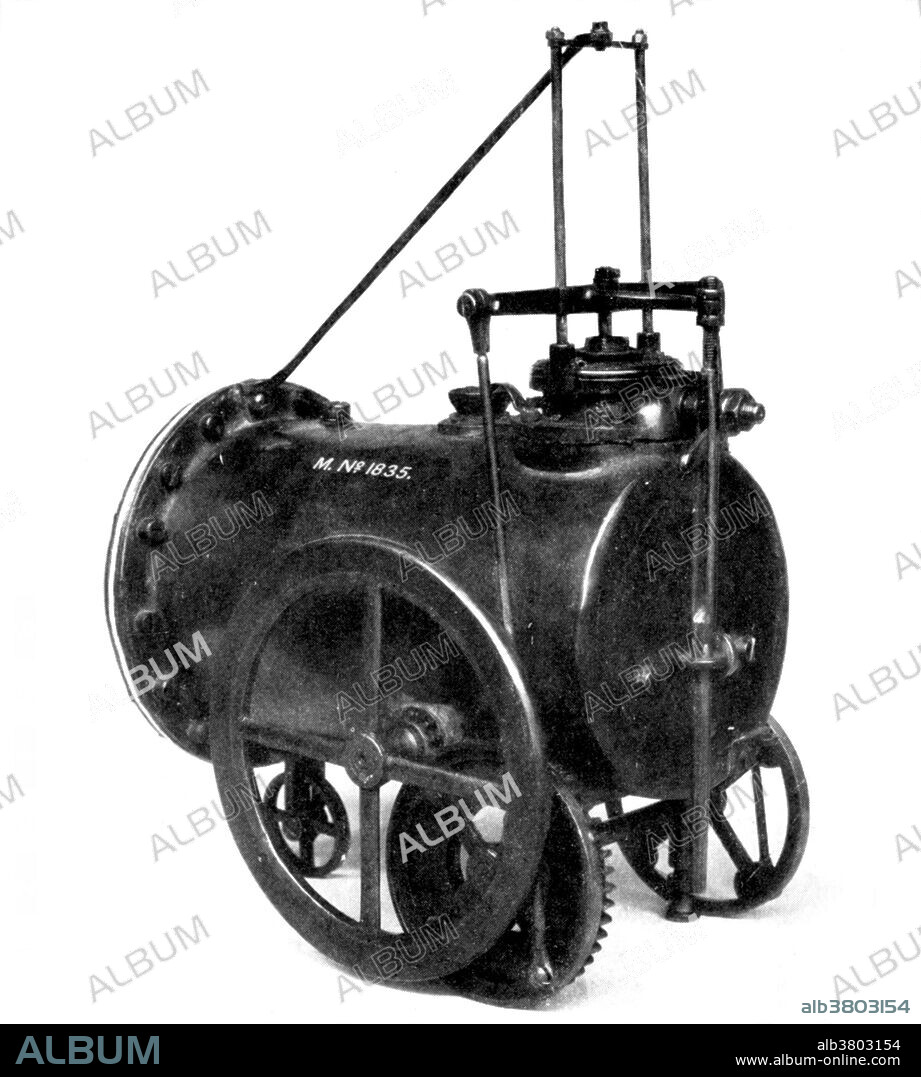alb3803154
Trevithick Road Locomotive Model, 1797

|
Añadir a otro lightbox |
|
Añadir a otro lightbox |



¿Ya tienes cuenta? Iniciar sesión
¿No tienes cuenta? Regístrate
Compra esta imagen.
Selecciona el uso:

Título:
Trevithick Road Locomotive Model, 1797
Descripción:
Ver traducción automática
Richard Trevithick made this working model locomotive in 1797. Its success encouraged Trevithick to manufacture full-size road and rail locomotives. As he became more experienced, he realized that improvements in boiler technology now permitted the safe production of high pressure steam, and that this could be made to move a piston in a steam engine on its own account, instead of using a pressure of close to one atmosphere in a condensing engine. Not only would a high pressure steam engine eliminate the condenser but it would allow the use of a smaller cylinder, thus saving space and weight. He reasoned that his engine could now be more compact, lighter and small enough to carry its own weight even with a carriage attached. He started building his first models of high pressure steam engines, initially a stationary one and then one attached to a road carriage. Exhaust steam was vented via a vertical pipe or chimney straight into the atmosphere, thus avoiding a condenser and any possible infringements of Watt's patent. The linear motion was directly converted into circular motion via a crank instead of using an inefficient beam.
Crédito:
Album / Science Source / New York Public Library
Autorizaciones:
Tamaño imagen:
3300 x 3670 px | 34.6 MB
Tamaño impresión:
27.9 x 31.1 cm | 11.0 x 12.2 in (300 dpi)
Palabras clave:
ALTA PRESIÓN • BLANCO Y NEGRO • CIENCIA • DISEÑO • ENERGIA • FAMOSA • FAMOSO • FOTO • FOTOGRAFIA • HISTORIA • HISTORICO • IMPORTANTE • INGENIERÍA • INVENCION • MAQUINA DE VAPOR • S. XVIII • SIGLO XVIII • TECNOLOGÍA • TECNOLÓGICA • TRANSPORTE
 Pinterest
Pinterest Twitter
Twitter Facebook
Facebook Copiar enlace
Copiar enlace Email
Email
